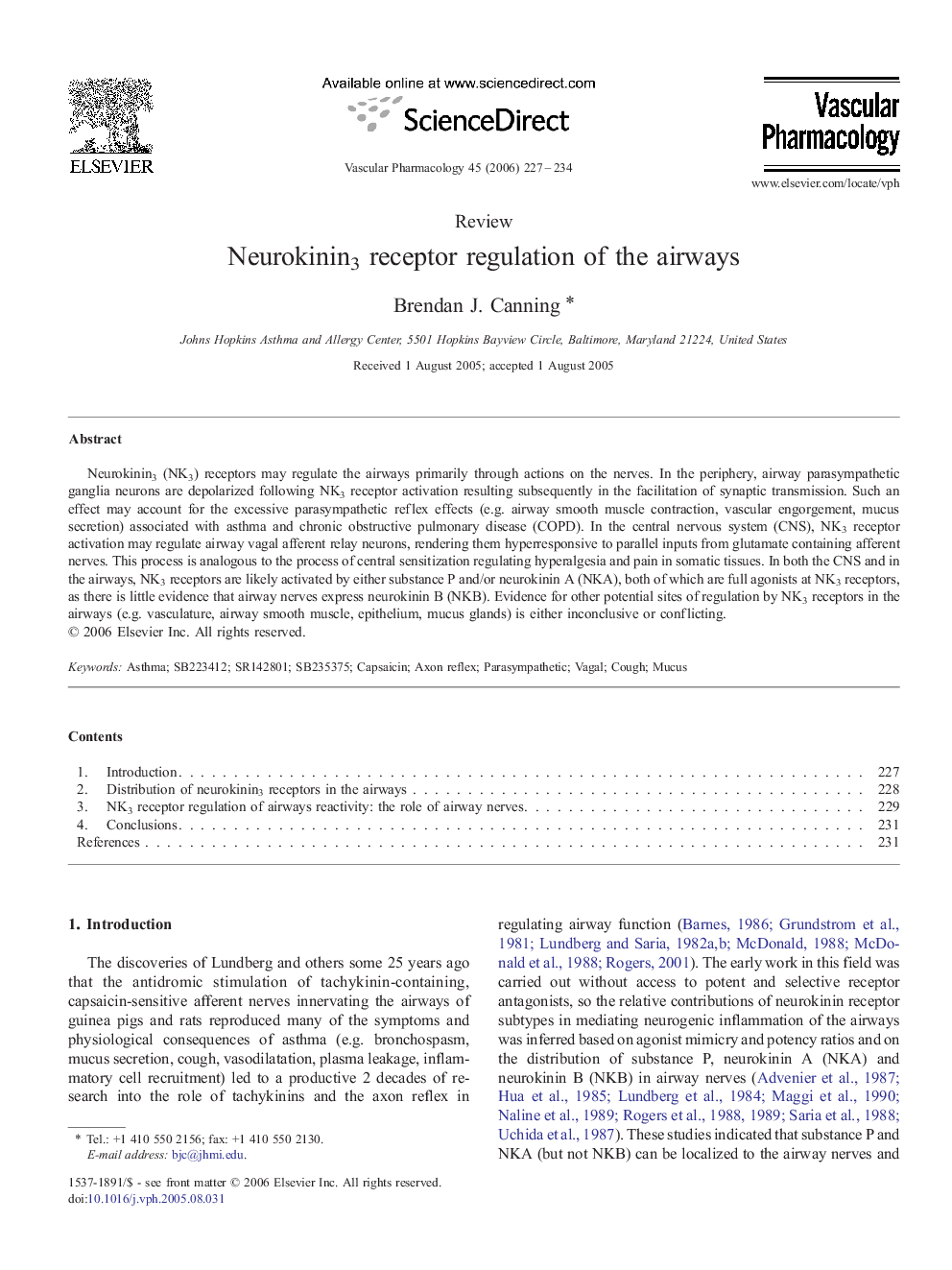| Article ID | Journal | Published Year | Pages | File Type |
|---|---|---|---|---|
| 2574670 | Vascular Pharmacology | 2006 | 8 Pages |
Neurokinin3 (NK3) receptors may regulate the airways primarily through actions on the nerves. In the periphery, airway parasympathetic ganglia neurons are depolarized following NK3 receptor activation resulting subsequently in the facilitation of synaptic transmission. Such an effect may account for the excessive parasympathetic reflex effects (e.g. airway smooth muscle contraction, vascular engorgement, mucus secretion) associated with asthma and chronic obstructive pulmonary disease (COPD). In the central nervous system (CNS), NK3 receptor activation may regulate airway vagal afferent relay neurons, rendering them hyperresponsive to parallel inputs from glutamate containing afferent nerves. This process is analogous to the process of central sensitization regulating hyperalgesia and pain in somatic tissues. In both the CNS and in the airways, NK3 receptors are likely activated by either substance P and/or neurokinin A (NKA), both of which are full agonists at NK3 receptors, as there is little evidence that airway nerves express neurokinin B (NKB). Evidence for other potential sites of regulation by NK3 receptors in the airways (e.g. vasculature, airway smooth muscle, epithelium, mucus glands) is either inconclusive or conflicting.
